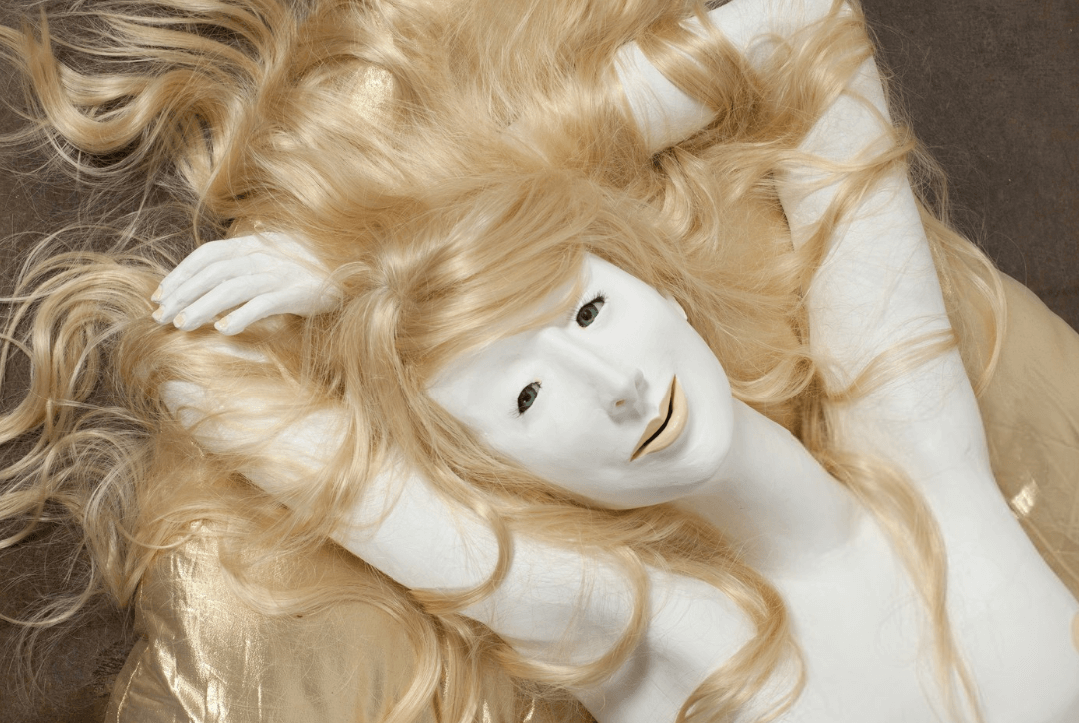It’s our goal to cover as much of the contemporary ceramics world as possible.It pains us to let an exhibition go unmentioned.So in order to scoop up as many worthy shows as we can, we run this column, “Exhibitions in Brief.”This week we are featuring works from the Art Los Angeles Contemporary 2016 (Santa Monica, CA), a contemporary art fair running in its 7th year that showcases emerging galleries from around the world, highlighting Los Angeles galleries.The fair also hosts series of artist talks, performances, panel discussions, and film screenings.This year the fair was held January 28 – 31.Working with both figurative and vessel imagery, often integrating both within her installations, Elizabeth Jaeger creates domestic spaces that hold a human presence with her life-sized figures, which are very reminiscent of sex dolls.These figures are unsettling in the most beautiful way, raw in their making, but also so physically and actively present with their evocative movements and facial expressions.Her piece, Platinum Musing I, is a perfect example of how the artist is “trying to create a space where there’s something unspecific that’s gone wrong, but there are no answers to what it could be, or what, as a viewer, you could do.”

Elizabeth Jaeger, Platinum Musing I, 2011, plaster, ceramics, house paint, synthetic wigs, fake eyelashes, and found boots, 72 x 24 x 18 inches.Courtesy of the artist.

Elizabeth Jaeger, Platinum Musing I (Detail), 2011, plaster, ceramics, house paint, synthetic wigs, fake eyelashes, and found boots, 72 x 24 x 18 inches.Courtesy of the artist.

Michael Zavros, Self portrait as a saint with Sean O’Pry/Versace 2015, Archival ink on hahnemuhle photo rag, 47.2 x 35.4 inches.Courtesy of StarkWhite.
“Harnessed, repurposed and transacted in the mode of a (fashion) empire, other qualities of beauty such as temperament, character and wisdom are drawn into question by the motive for production – such an image conveys something extra to what is beautiful in the world. In emblazoning his name as author on the slightly ragged T-shirt worn by O’Pry, Zavros produces an image that would usually cost a fashion house tens of thousands of dollars, if not more. Yet judging from the T-shirt the ‘label’ looks rather homemade, skint even. This to some extent improbable endorsement is perhaps constructed precisely to illustrate the role of money in the creation of beauty, as well as to fashion a shock of complicity on both the count of artist and model. Perhaps the artist and model are hesitant to grant the viewer their beauty in this context, too, and instead mildly taunt the system that they do so well by.”
Zavros’ work has been exhibited in major museums throughout Australia, New Zealand, Asia, and Europe.He is represented by StarkWhite in New Zealand.

Rachel de Joode, Soft Inquiry II, 2015, ceramic and archival inkjet print on PVC, 14 × 19 × 7 inches.Courtesy of Artsy.
This exchange of realities is certainly working to her benefit.She is represented by Neumeister Bar-Am in Berlin.

Rachel de Joode, Soft Inquiry X, 2015, ceramic and archival inkjet print on PVC, 17.5 x 17.7 x 4.7 inches.Courtesy of the artist.

Rachel de Joode, Soft Inquiry X (Detail), 2015, ceramic and archival inkjet print on PVC, 17.5 x 17.7 x 4.7 inches.Courtesy of the artist.

Ry Rocklen, Handywoman, Iran, 7th-6th Century B.C., 2015, ceramic vessels, mirror-mounted panel, brass, and glass, 34.3 × 32.5 × 9.5 inches.Courtesy of Artsy.

Guy Overfelt, Bois Hibou Femme Bong (After Picasso), 2015, glazed and engraved porcelain, 11.5 × 9.5 × 6 inches.Courtesy of Artsy.

Guy Overfelt, Bong Deux Anses Haute King (After Picasso), 2015, glazed and engraved porcelain, 15 × 7 × 10.5 inches.Courtesy of Artsy.

Guy Overfelt, Bong Deux Anses Haute King (After Picasso) (Detail), 2015, glazed and engraved porcelain, 15 × 7 × 10.5 inches.Courtesy of Artsy.

Tom Sachs, Shelley Duvall, 2014, English porcelain, high fire reduction, temple white glaze, NASA Red engine inlay, 2.75 × 4 × 4.25 inches.Courtesy of Artsy.

You can create a doll look like somebody?